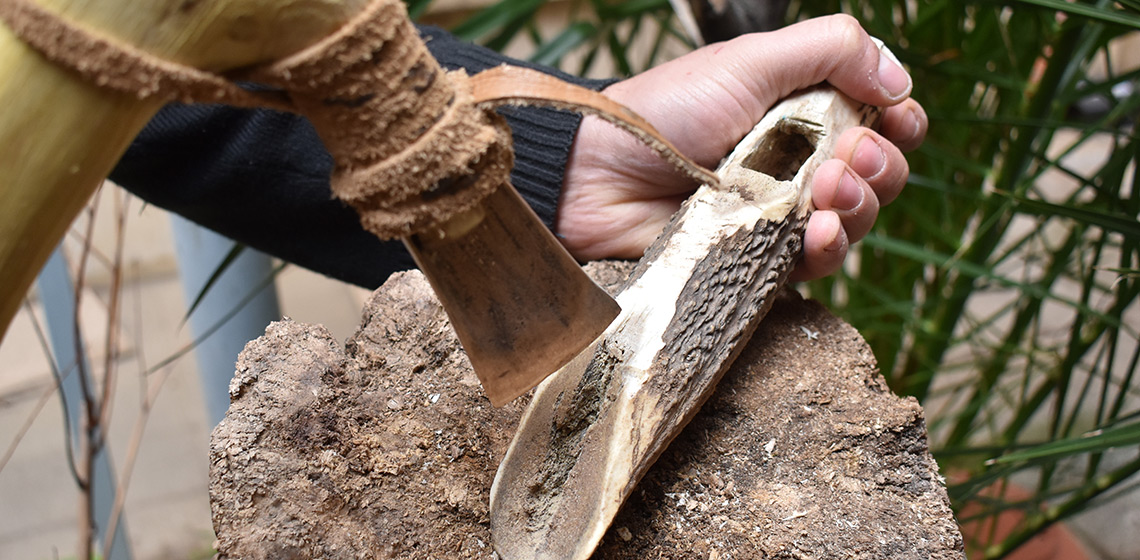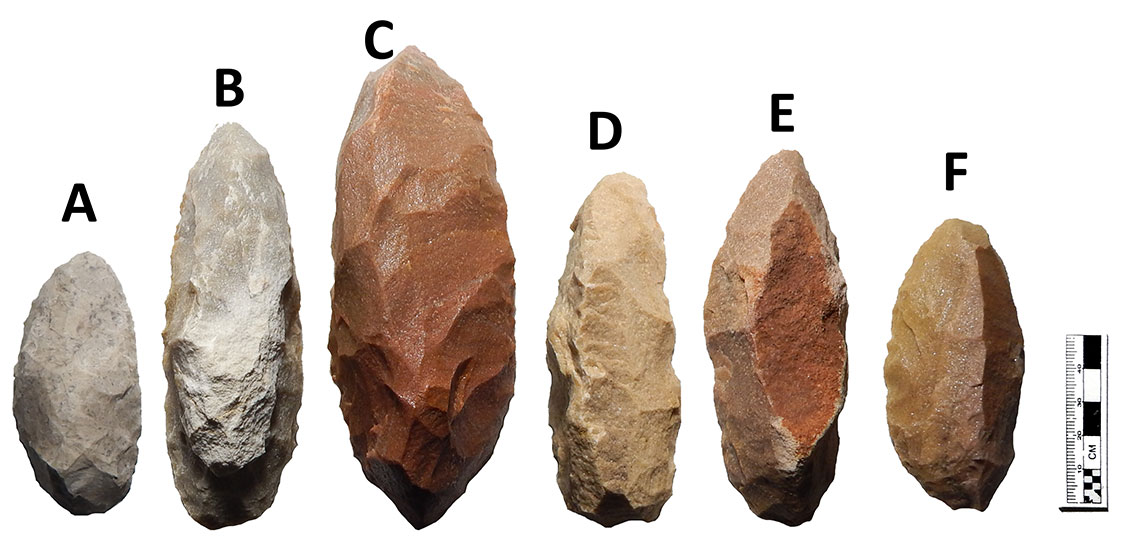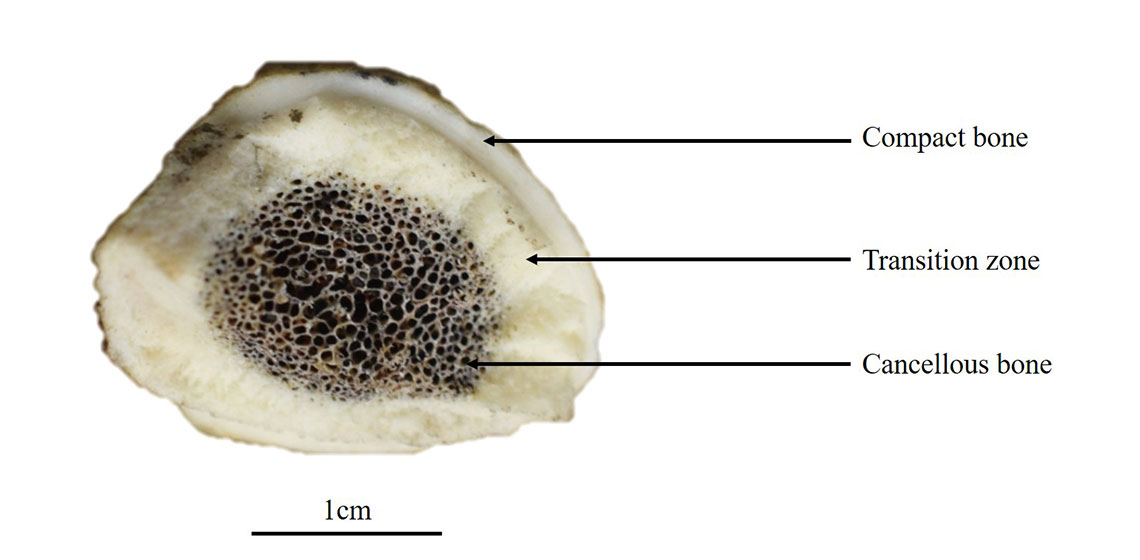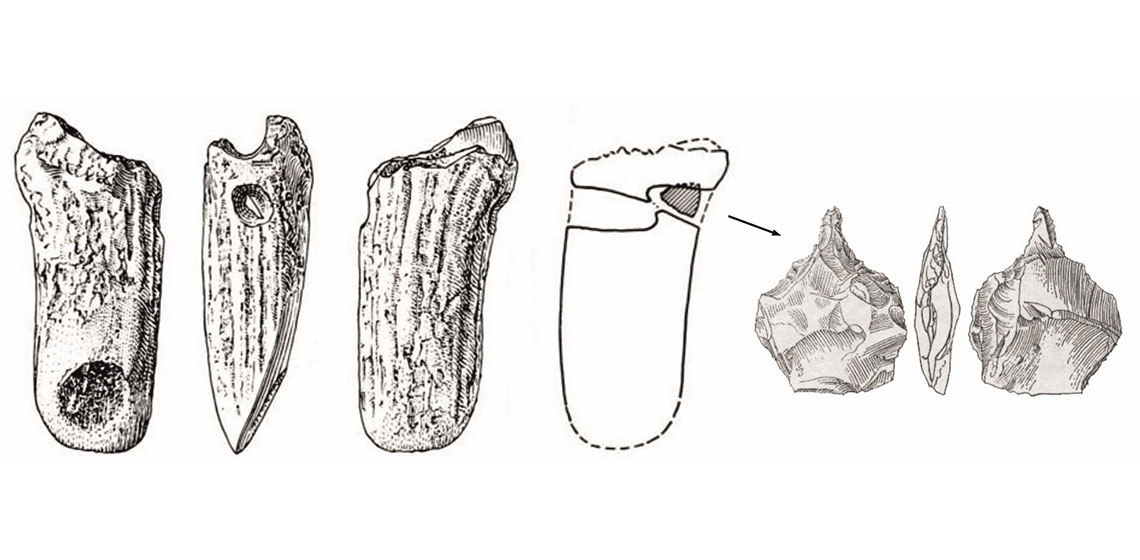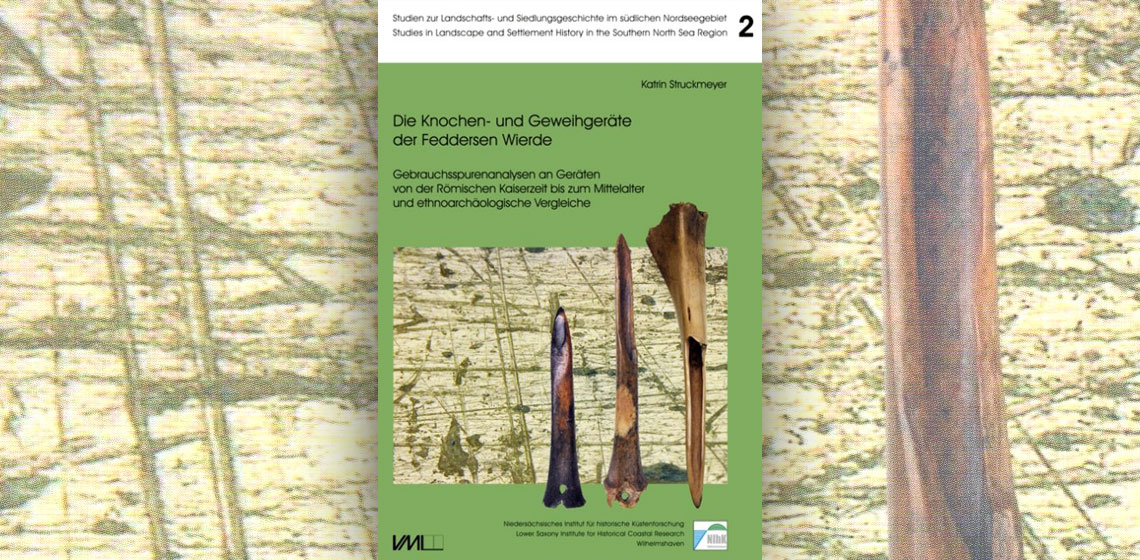antler
Hoes or Adzes? Experimental Reproduction and Uses of Deer Antler Tools from the Bronze Age Terramara of Pragatto (Italy)
Publication Date
#EAC12 World Tour 2021
***This research aimed to evaluate the hypotheses related to the production and possible uses of a class of deer antler tools from the Bronze Age Terramara of Pragatto (Italy). These bevel-ended instruments are traditionally considered handled hoes, related to agricultural purposes such as tillage...
***This research aimed to evaluate the hypotheses related to the production and possible uses of a class of deer antler tools from the Bronze Age Terramara of Pragatto (Italy). These bevel-ended instruments are traditionally considered handled hoes, related to agricultural purposes such as tillage...
Bringing Experimental Lithic Technology to Paleoamerican Brazilian Archaeology: Replication Studies on the Rioclarense and Garivaldinense Industries
Publication Date
Experimental archaeology, especially experimental lithic technology, has not yet been established as a line of research in Brazil (or most of South America). This article presents the first systematic experimental research aiming the replication of Paleoamerican (or Paleoindian) lithic industries. Experimental replication of the stemmed points from Rioclarense and Garivaldinense industries were carried out in order to better understand their original technology.
Have you got the tine? Prehistoric Methods in Antler Working
Publication Date
Antler working was prevalent throughout prehistory, with a breadth of intricately detailed and technologically complex antler artefacts observed within the archaeological record. In particular, during the Palaeolithic, Mesolithic, and Neolithic, antler working with flint tools would have been a time-consuming process. While the chaîne opératoire of producing certain antler artefacts has previously been explored...
How Did They Drill That? – A Few Observations on the Possible Methods for Making Large-sized Holes in Antler
Publication Date
From the Neolithic period comes a whole range of various kinds of artefacts made of antler (for example axes, hammer-adzes), distinguished by the presence of a large hole (diameter over 2 cm) in their structure. With time, archaeologists started to wonder about possible ways of producing holes of this type...
Book Review: Die Knochen- und Geweihgeräte der Feddersen Wierde by Katrin Struckmeyer
Publication Date
The purpose of this book, which was originally presented as a dissertation at Hamburg University, is to present the 1,293 bone, antler, horn and ivory tools that were found at the terp settlement Feddersen Wierde in the coastal area of Lower Saxony, Germany, and to decide on the possible functions of the tools.

